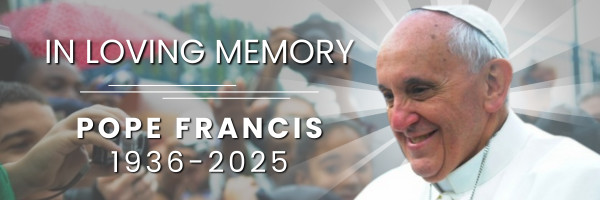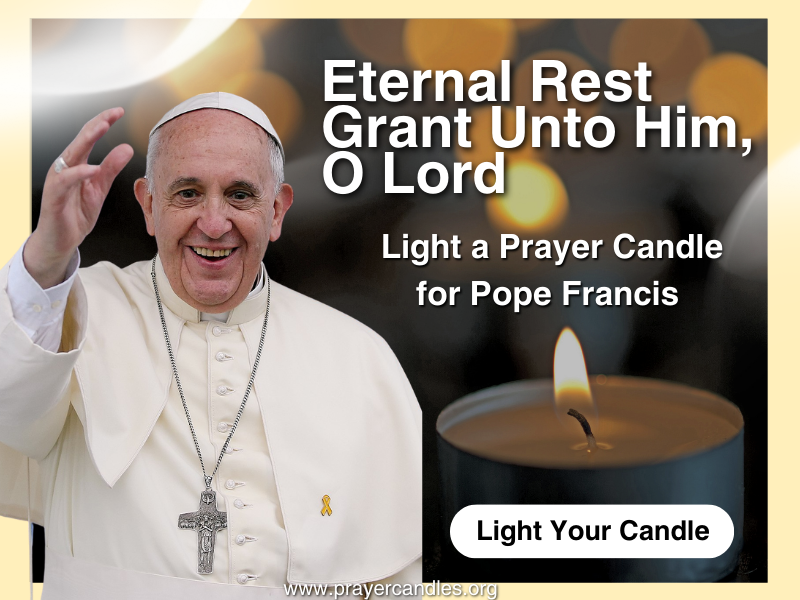We ask you, urgently: don't scroll past this
Dear readers, Catholic Online was de-platformed by Shopify for our pro-life beliefs. They shut down our Catholic Online, Catholic Online School, Prayer Candles, and Catholic Online Learning Resources essential faith tools serving over 1.4 million students and millions of families worldwide. Our founders, now in their 70's, just gave their entire life savings to protect this mission. But fewer than 2% of readers donate. If everyone gave just $5, the cost of a coffee, we could rebuild stronger and keep Catholic education free for all. Stand with us in faith. Thank you.Help Now >
Archdiocese of Perugia
FREE Catholic Classes
(PERUSINA)
Located in Umbria, Central Italy. The city is situated on a hill on the right of the Tiber. The Gothic cathedral is of the fourteenth century, its façade being yet unfinished; it contains paintings by Baroccio, Manni, and Signorelli ; there is a marble sarcophagus in which are the remains of Urban IV and Martin IV ; in the chapel del Santo Anello is preserved an onyx ring, which is said to have been the marriage ring of Our Lady , and which was venerated first at Chiusi, where it was stolen, and then taken to Perugia in the fifteenth century; in the chapter library is preserved a codex of the Gospel of St. Luke, of the sixth century. Other churches are: San Pietro dei Cassinesi, the church of a monastery founded by St. Peter Vincioli about 1000; Sant' Ercolano, the high altar of which is made of an ancient sarcophagus; Sant' Angelo, a round building, dating from the sixth century; the Madonna della Luce, a graceful little temple by Galeazzo Alessio ; San Francesco del Prato, now the seat of the "Accademia" of fine arts. The university, founded in 1320, has three faculties, and contains a museum of Etruscan, Roman, and Christian antiquities, with many sculptures and inscriptions, among the latter, the "Tabulæ Perusinæ", discovered in 1822. The most notable ancient monuments of the town are the Porta Augusta; the tomb of the Volumnii, which was discovered in 1840 by Vermiglioli; and the Etruscan walls.
Perugia was among the most important cities of the Etruscans, with whom it took part in the wars against Rome in 310 and 295 B.C. , as also in the Samnite War. The Perugian War (41 B.C. ) is famous; the troops of Anthony were shut up here, where they were compelled to surrender. During the Gothic War, Perugia suffered various sieges, by the Byzantines in 537 and in 552, and by the Goths in 546 and 548. The Lombards at the time of their first incursion had taken possession of the city, but in 592 it came again under the Byzantine power and was made the seat of a dux . In 749 it was besieged by the Lombard King Rachis, who, however, was persuaded by Pope Zacharias to raise the siege. Pepin gave the city to the Holy See. From the beginning of the eleventh century, Perugia was established as a free commune and was in struggles with the neighbouring cities of Umbria and of Tuscany (Chiusi, 1012; Cortona, 1049; Assisi, 1054; Todi, 1056; Foligno, 1080 and 1090); it was governed by consuls (from 5 to 16). for whom were substituted in 1303 the priori delle arti ; after 1174 there was a podestà , and later a capitano del popolo .
Perugia, friendly to Florence and faithful to the Holy See, was essentially a Guelph city, and in the thirteenth century the popes established their residence here for a long time ; four of them were elected here (Honorius III, Honorius IV, Celestine V, and Clement V ). On the other hand, continuing its wars with neighbouring cities (Spoleto, from 1324, was besieged for two years), Perugia extended its sovereignty over the greater portion of Umbria, and over a part of Tuscany. In 1375 it was among the first cities that revolted against Gregory IX at the instance of the Florentines. Meanwhile, there had been formed two parties: the Raspanti (the popular party) and the Beccarini (the party of the nobles), and between them they had made it possible for Biondo Michelotti to become lord of the city in 1390; he, however, was killed in 1393, and then Gian Galeazzo Visconti took possession of the town; but in 1403 it became subject to Boniface IX. Afterwards it fell into the power of Ladislao di Napoli; in 1416 the city was taken by Braccio da Montone, who was recognized as lord of Perugia by Martin V. At his death in 1424 the nobles came into power, but contention soon developed among them, and eventually the Baglioni made away with the Oddi family. Finally, Gian Paolo Baglione became a tyrant of the city, making himself detested by his cruelty and dissolute habits. He was reduced to order in 1506 by Julius II ; but fresh cruelties against his own relations led to his decapitation by order of Leo X in 1520; Perugia then came once more into immediate dependency upon the Holy See .
In 1534 Rodolfo Baglione set fire to the Apostolic palace, and the vicelegate was slain; and no sooner had order been established after these events, than a rebellion broke out on account of the tax on salt, which Paul III had increased in 1540; Perugia declared itself a "city of Christ", and confided its keys to the care of a crucifix. On 5 July, however, it was compelled to surrender to the troops of Pierluigi Farnese and lost its freedom. Paul III built a fortress to prevent further revolts of the Perugians, while Julius III restored to them the greater part of their privileges. In the rebellion of 1848, the first act of the Perugians was to demolish the tower of Paul III. In 1859 there was a provisional Government established, but the Pontifical troops soon took possession of the city, though they did not commit the acts of cruelty of which they have been accused. Finally in 1860 General de Sonnaz took possession of the town in the name of the King of Sardinia.
Blessed John of Perugia, one of the first companions of St. Francis, died in 1230. In the martyrologies are found the names of the martyrs Constantius (Constantinus, whom some believe to have been a bishop ), Florentius, and Felicissimus, who died at Perugia. Under Decius one Decentius was bishop, according to the tradition; but the first bishop of whom there is any certain knowledge was St. Herculanus, killed by King Totila in 546; many admit there were two bishops and saints of this name, of whom the first is said to have died either in one of the great persecutions or under Julian the Apostate (Cappelletti).
St. Herculanus was succeeded by Joannes, who consecrated Pope Pelagius I (566); Aventius (591); Laurentius (649); Benenatus (679); St. Asclepiodorus (about 700), whose relics were later taken to Metz ; Conon (998) and Andreas (1033), who had various controversies with the abbots of San Pietro; Joannes (1105), who consecrated the monastery of Monte Corona; Vivianus, who was present at the council of 1179; Giovanni (1206), who gave a convent to St. Francis; Salvio de' Salvi (1231), a pious and learned prelate, who restored Santo Stefano, the ancient cathedral ; Francesco Poggi, O. Min. (1312), who built S. Domenico nuovo; Andrea Bontempi (1339), a cardinal, and legate general of Umbria; Andrea Giovanni Baglione (1434), who filled several convents with reformed religious; Dionisio Vannucci (1482), who erected the altar of the chapel del Sacro Anello; Giovanni Lopez (1492), a cardinal who enjoyed influence under Alexander VI ; Trilo Baglione (1501), deposed by Alexander VI for having taken up arms against Cæsar Borgia and restored to his see by Julius II ; Antonio Ferreri (1506), who suspected by Julius II died in the Castle of S. Angelo in 1508; Cardinal Agostino Spinola (1510), under whom the canons of the cathedral, who since the twelfth century had lived according to the Rule of St. Augustine, were relieved of that rule; Jacopo Simonetti (1535), a cardinal ; Fulvio Corneo (1550), reformer of the diocese and founder of the seminary ; Ippolito Corneo (1553), who established a house of reform, and a monastery for poor young men; Giulio Oradini (1562), who founded a college for clerks; Napoleone Comitoli (1591), the founder of other charitable institutions ; M. Ant. Ausidei (1726), who embellished the cathedral ; Alessandro M. Odoardi (1776), a zealous prelate, who discovered the body of St. Costanzo; Camillo Campanelli (1804), who took the oath of allegiance to Napoleon ; Carlo Filesio Cittadini (1818), who distinguished himself by his firmness and prudence against the Provisional Government of 1831, and by his generosity saved the city from pillage at that time ; Gioacchino Pecci (1846), who became Leo XIII, and who made Perugia an archdiocese without suffragans.
The archdiocese has 199 parishes, with 100,900 inhabitants, 9 religious houses of men, 21 of women, and 1 Catholic weekly publication.
Join the Movement
When you sign up below, you don't just join an email list - you're joining an entire movement for Free world class Catholic education.

Novena for Pope Francis | FREE PDF Download
-

- Easter / Lent
- Ascension Day
- 7 Morning Prayers
- Mysteries of the Rosary
- Litany of the Bl. Virgin Mary
- Popular Saints
- Popular Prayers
- Female Saints
- Saint Feast Days by Month
- Stations of the Cross
- St. Francis of Assisi
- St. Michael the Archangel
- The Apostles' Creed
- Unfailing Prayer to St. Anthony
- Pray the Rosary
Cardinals Request Prayers from Faithful Ahead of Historic May 7 Conclave
How a New Pope Is Elected
Toy Shortages Threaten Christmas Traditions as Trade War Impacts Retailers
Daily Catholic
 Daily Readings for Thursday, May 01, 2025
Daily Readings for Thursday, May 01, 2025 St. Marculf: Saint of the Day for Thursday, May 01, 2025
St. Marculf: Saint of the Day for Thursday, May 01, 2025 To Saint Peregrine: Prayer of the Day for Thursday, May 01, 2025
To Saint Peregrine: Prayer of the Day for Thursday, May 01, 2025 Daily Readings for Wednesday, April 30, 2025
Daily Readings for Wednesday, April 30, 2025 St. Pius V, Pope: Saint of the Day for Wednesday, April 30, 2025
St. Pius V, Pope: Saint of the Day for Wednesday, April 30, 2025- Prayer to Saint Joseph for Success in Work: Prayer of the Day for Wednesday, April 30, 2025
![]()
Copyright 2025 Catholic Online. All materials contained on this site, whether written, audible or visual are the exclusive property of Catholic Online and are protected under U.S. and International copyright laws, © Copyright 2025 Catholic Online. Any unauthorized use, without prior written consent of Catholic Online is strictly forbidden and prohibited.
Catholic Online is a Project of Your Catholic Voice Foundation, a Not-for-Profit Corporation. Your Catholic Voice Foundation has been granted a recognition of tax exemption under Section 501(c)(3) of the Internal Revenue Code. Federal Tax Identification Number: 81-0596847. Your gift is tax-deductible as allowed by law.




 Daily Readings for Thursday, May 01, 2025
Daily Readings for Thursday, May 01, 2025 St. Marculf: Saint of the Day for Thursday, May 01, 2025
St. Marculf: Saint of the Day for Thursday, May 01, 2025 To Saint Peregrine: Prayer of the Day for Thursday, May 01, 2025
To Saint Peregrine: Prayer of the Day for Thursday, May 01, 2025 St. Pius V, Pope: Saint of the Day for Wednesday, April 30, 2025
St. Pius V, Pope: Saint of the Day for Wednesday, April 30, 2025


